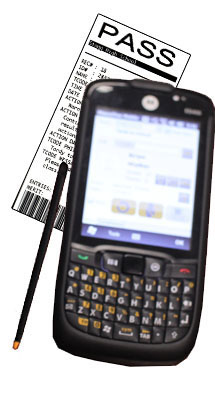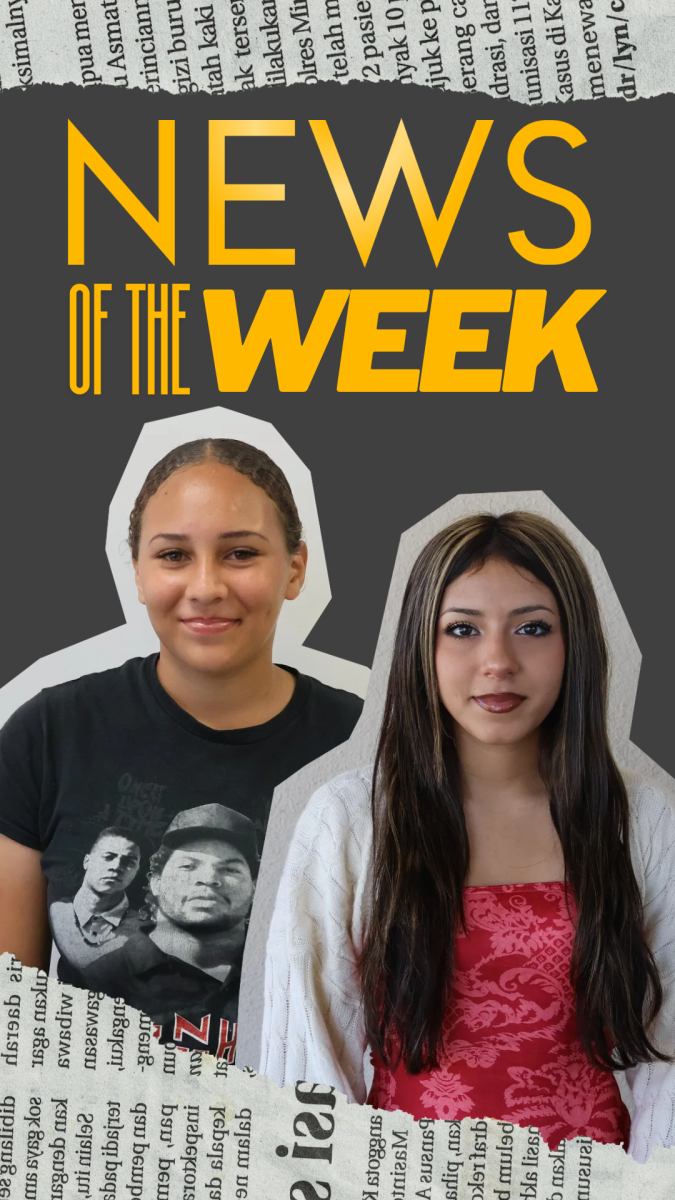This week students have seen campus security monitors with new equipment that helps reduce student tardiness. The school has purchased a new device from the Plasco Trac Company that specializes in tracking students on campus with ID scanners. According to Plasco Trac, the use of scanners has shown a reduction of 50 to 80 percent in tardiness.
Stagg is not the only school using scanners. Edison High School and many other schools in California also use scanners.
The scanners come in two different styles. There is one for the attendance office and there is the mobile one that is given to CSMs and assistant principals. The one for the attendance office has a scanner similar to the ones used for the lunch lines and it comes with a printer. The mobile scanner is similar to a cell phone and it comes with a small printer that is strapped to the user’s waist.
Using a scanner is not difficult. It scans the student’s ID and then prints a pass that resembles a receipt. Even if the students don’t have their IDs on them, the CSMs can still punch in the ID number or their name into the scanner and a receipt will be printed. The contents of the pass contain information about the students ID number, their name, the time they were scanned, the date, and what violations they were scanned for.
It also states what disciplinary punishment they have to do. The first time they’re scanned, students get a warning. The second time they’re scanned, they get after-school detention in M3. The third time they’re scanned, they have to report to Saturday school.
To clear a student of the violation, they will have to do their disciplinary punishment and bring their pass to have it rescanned by the CSM.
After it is scanned the information about the student and their violation record will be stored into the computer’s database. The system will be inputted with every single student’s information and whether they are on the “No-Go” list or not.
And as it sounds, the pass can be used as a pass to get back to class and to get out of class. Students can be scanned for having an appointment with someone in the office and get a pass but not get any violations on their record for it.
The ID scanner’s purposes are to reduce the tardy rates, to enforce the dress code, and to encourage students to bring their IDs.
These scanners are going to make tracking student activities easier for the staff.
“With fewer people to do the work, we have to get smarter about it and use technology to help support the staff,” said Principal Bill Parks.
The scanners have been seen on campus since this Wednesday. And as students experience it everyday from now on it will become a regular thing.
But just weeks before the scanners were put to use the CSMs had to go through a training process to learn more about how the scanners worked . A certain system had to be installed in order to connect with the scanners and the printer. All of the CSMs learned how to use it and they finished installing the system but there was one thing to do before the scanners were usable.
Assistant Principal Gamal Salama had to do the most important part of the processes, inputting the information. Even though everything was done without the student information the scanners would have no meaning to them so Salama spent his weekend inputting the information. He also had to tune the system so that it would match the settings that were needed.
According to Salama, future events such as the school dance can be used as a category in the scanner and it’ll allow the CSMs to tell whether certain students are allowed at the event or not.
Because the scanners can limit what a student does, there is a high possibility that students will oppose the idea of having ID scanners around campus without giving it a second thought. But chemistry teacher John Steiner encourages students to “Give it a try” because, “they don’t know until they try it out.”













